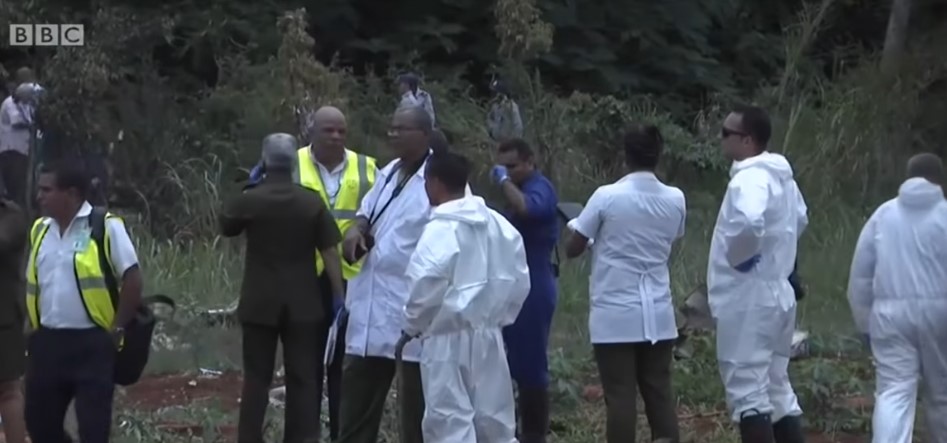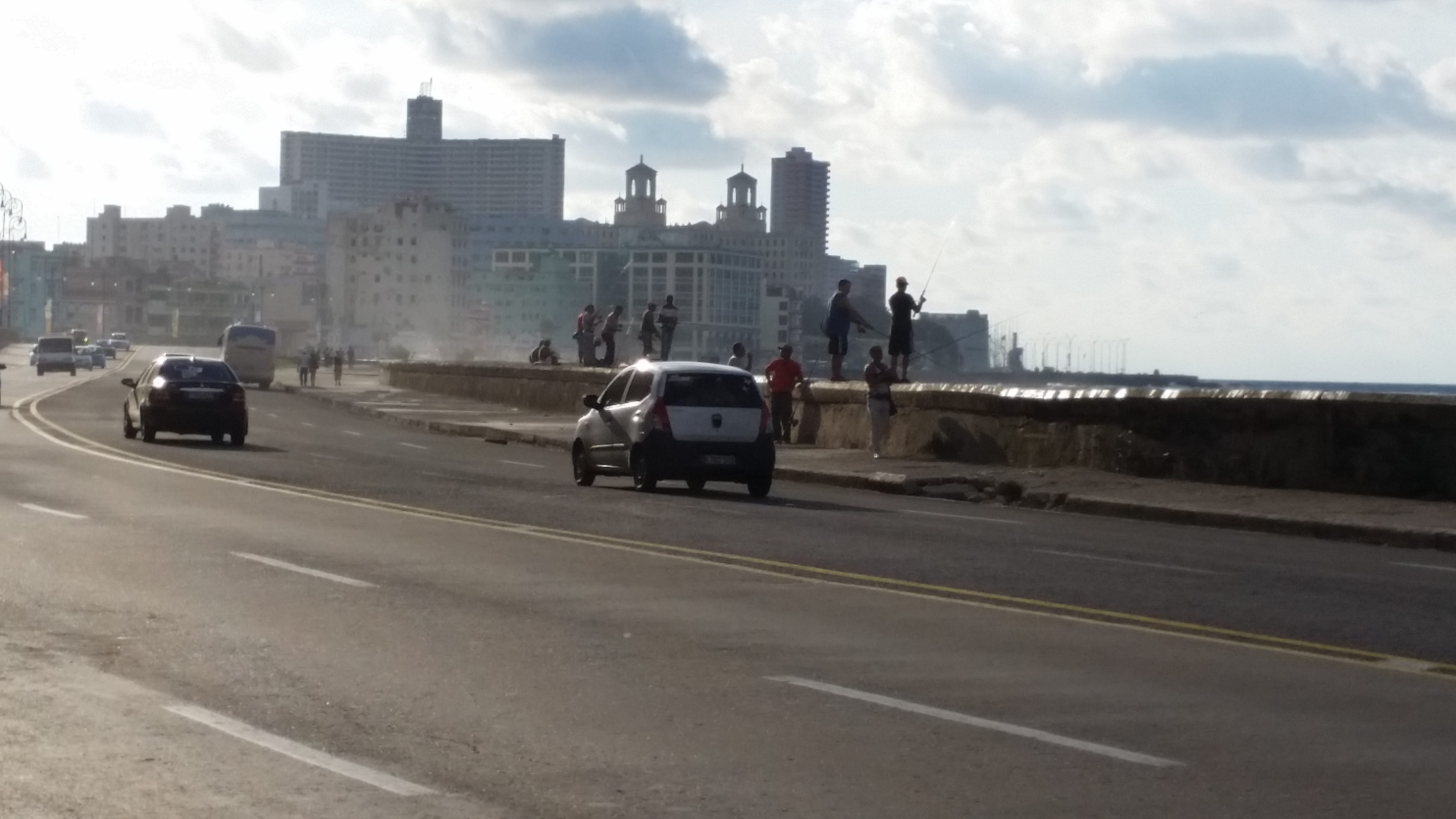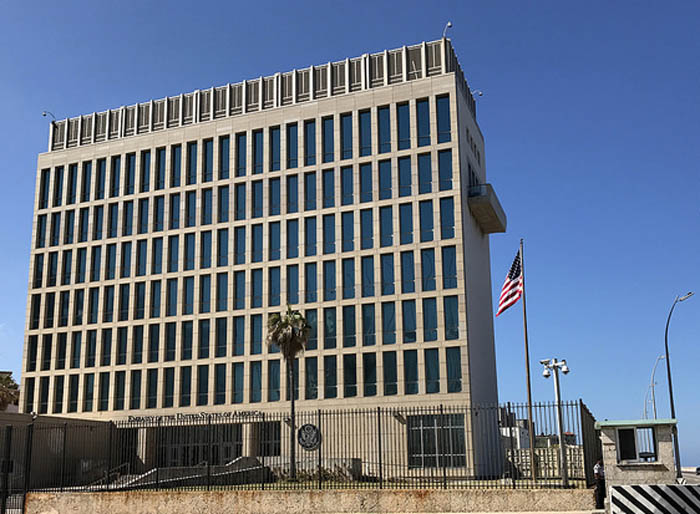I ventured out into the streets of Old Havana as soon as I could change money, store my cash in the room safe and change clothes.
It was just after 5:00 p.m. on Saturday, and I wanted to make the most of the daylight. Taxi drivers in classic U.S. cars from the 1940s and 1950s circled the area outside the hotel. I opted to walk as it seemed the best way to experience the city.
I headed down Cuba Street, a cobblestone lane shared by pedestrians and cars that cuts all the way across Old Havana, from the Malećon to the far side of the old port. Residents stood in their doorways watching people come and go. Locals and tourists shared the narrow sidewalks, stepping on and off to pass each other by as taxis, pedicabs and food carts accelerated down the street. On a side street, children played soccer with an old tethered ball.
Turning on Empedrado Street, I found music and activity. On one side, men worked on their classic cars outside a parking area for the taxis. On the other, a rhythmic beat attracted a growing crowd inside a bar called Bodequita del Medio. A large man stood outside waving people in. It looked fun and festive, and I made a mental note to return.
Colonial History Speaks
I came upon an old fortress sitting just off the Habana Bay. I didn’t know at the time its significance. Old Havana dates back to 1519, when the Spanish took it as their own, naming towns, building structures and enslaving locals. The structure, the Castillo de la Real Fuerza (Castle of the Royal Force), is one of the oldest colonial fortress in the Americas.
It is said to be open to tours, but it never looked that way. The darkened and neglected walls prevented my imagination from exploring the castle’s history.
Built between 1558-1577, the castle is a monument to the trade activities the Spanish operated in Cuba. Some books suggest it was strategically useless due to its distance from the water. But its canons, mortars, moat and drawbridge would likely have a lot to say about its days of protecting the key trading post from invading pirates.
Books, Music and Film
The castle bordered an open square — one of five in Old Havana, each with its own characteristics. The Plaza de Armas is a good place to begin a visit. With its airy openness and vendor stalls of books and posters, it is reminiscent of similar scenes along the River Seine in Paris.
Off to the side, a band played music in the background, encouraging relaxation and cheerful conversation.
“Hola,” a vendor said. “Where are you from?”
“The United States,” I said.
“What do you think of Cuba?” he asked, eagerly.
“It’s nice,” I said. “What do you think of it?”
“No mafia. No guns. People are happy,” he said definitively. “We have fiestas. People dance salsa, and life in Cuba is good.”
I decided to give Cuba, its people and history a chance—to think of it not as a Communist country long at odds with the United States but as a place with people to befriend and a culture to explore.
I browsed the Spanish- and English-language books along the shelves. I recognized one—The Motorcycle Diaries. It is about Che Guevara’s travels through South America as a young medical student. Gael García Bernal plays Che in a 2004 film version of the story.
“The book is much better,” the vendor said, offering to sell it to be for 10 CUCs (about $12.50).
I continued browsing the books. Most were of Cuban history. One featured prominently was “La historia me absolverá,” the now famous speech Fidel Castro wrote while imprisoned in solitary confinement during the pre-Revolutionary days under the Fulgencio Batista presidency.
When Fidel delivered the now-famous two-hour speech, only a prosecutor and three judges were there to hear it. Apparently not impressed, the judges sentenced him to 15 years in prison, seemingly silencing Fidel’s influence and rebellion. But the story goes that Fidel secretly transcribed the speech onto small pieces of paper, which his supporters transferred out of prison and assembled into pamphlets to be distributed to the Cuban people. It would become the philosophical blueprint for the 1959 Revolution. And I imagine it is one every Cuban student reads at a young age.
I walked over to another booth where a merchant stood in front of brightly colored posters. His name was Jorge, and the conversation started a lot like it had with the other vendor.
“What did you think of Cuba before you came here?” he asked, eyes full of excitement.
“I was a little nervous about coming,” I said.
His eyes blinked with incomprehension, and he looked a little hurt. I immediately regretted my admission.
“I didn’t know what it would be like,” I said, trying to apologize for my apprehensions. I didn’t recount news reports I had read of political detentions that took place the week prior during Pope Francis’s visit to Cuba. Nor did I tell him about the time Cuban police detained and interrogated a friend who had traveled there as a freelance journalist.
“This is my first day here,” I said. I tried to shrug it off, and we continued on as friends.
Jorge showed me colorful posters arranged between us. They were all from Cuban films — documentaries, animation, historical fiction and comedies. Many had won international awards.
I was intrigued.
“This one is about Cuba. It’s an animation film,” he said. “This one is about the Beatles. It’s a documentary.” He said Cuba had once banned music by The Beatles, not wanting ideas from their songs to seep into Cuban mentality. But eventually, the music won. The guitar triumphed.
As it turns out, the film was not about the Beatles at all. It is about a Cuban folk singer. But that is a story for another day. At the time, I was simply content to believe what young Jorge told me.
It seemed politics was only a part of Cuba. The country had films that encapsulated rich cultural expressions of its people and posters that colorfully displayed the films.
I liked what I saw.
Pretty Plaza Vieja
From there, I walked to the Plaza Vieja, a wide open square where buildings had been restored and painted with bright colors.
I could see why UNESCO calls Old Havana “the most impressive historical city centre in the Caribbean.” The architectural design of the buildings is ornate, with curved archways and columns, large shuttered windows and cast iron gates.
Following a rhythmic beat to the far side of the plaza, I found young men and boys wearing white robes practicing capoeira—an Afro-Brazilian martial art that combines music, dance and acrobatics into a nonviolent combat.
It is said the Cuban culture comes from mixing in new forms of art and cultivating it until it ripens, and capoeira is surely an example of that.
I stood mesmerized by the rhythmic beat and dance, and I liked what I felt.




